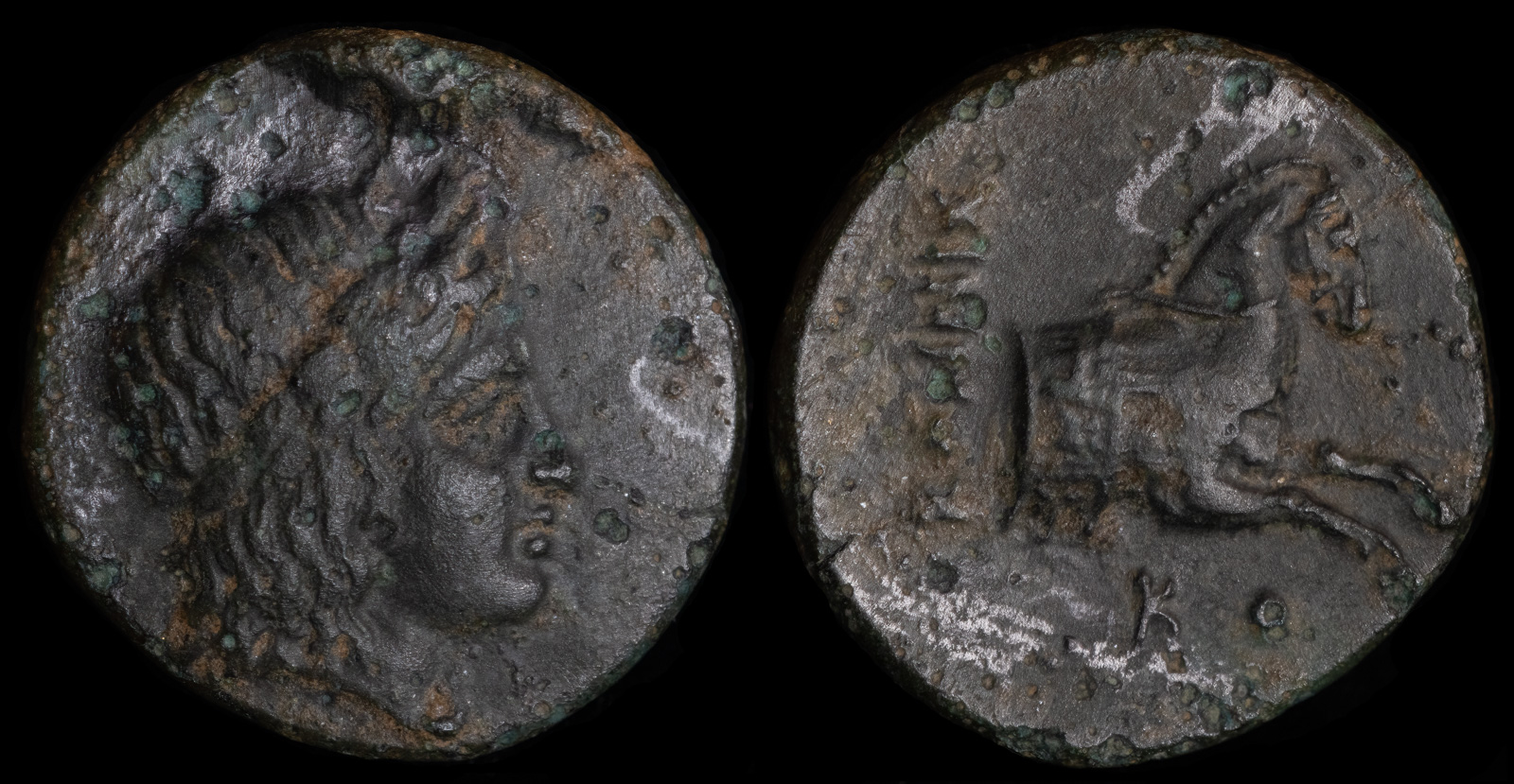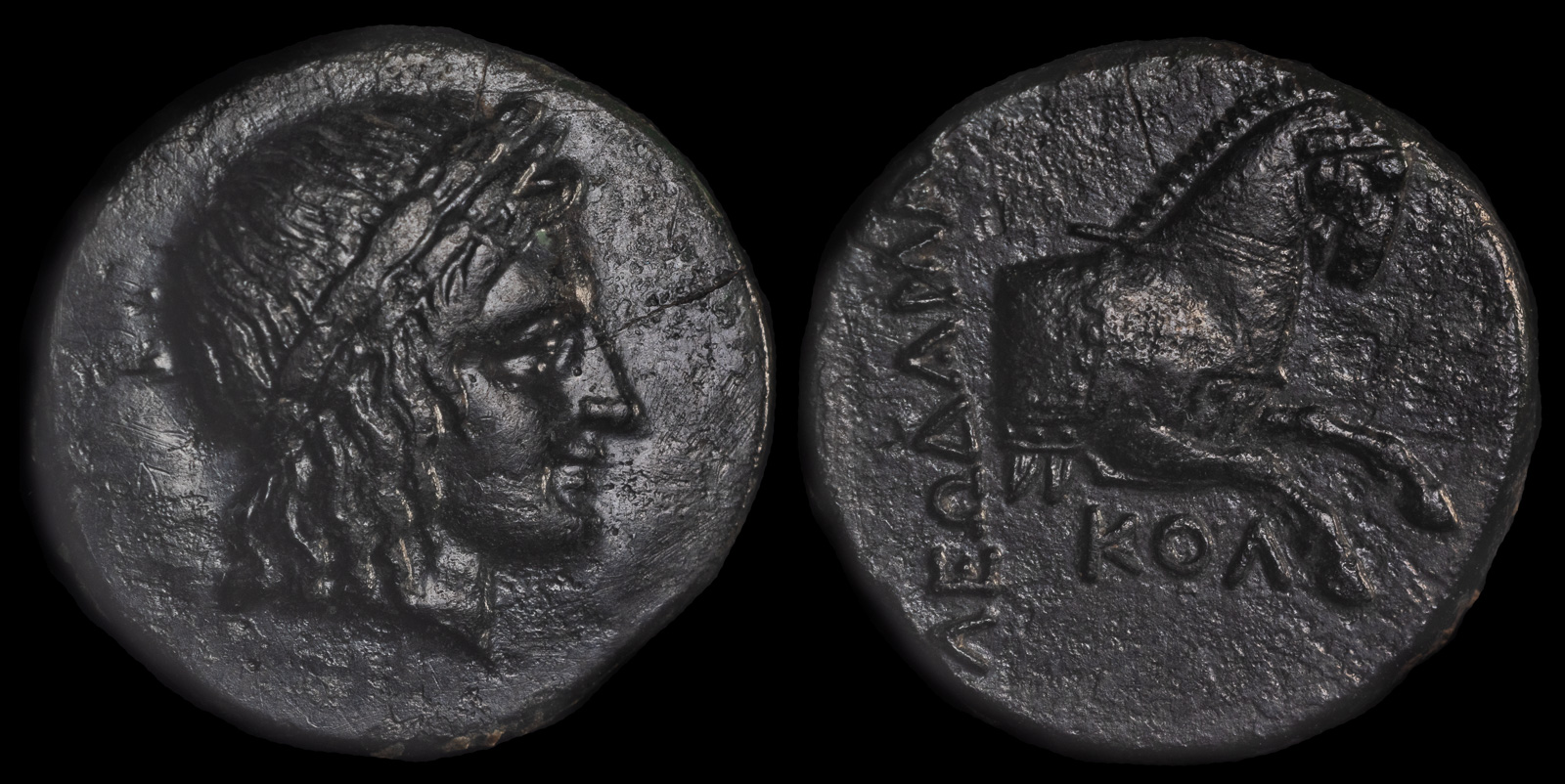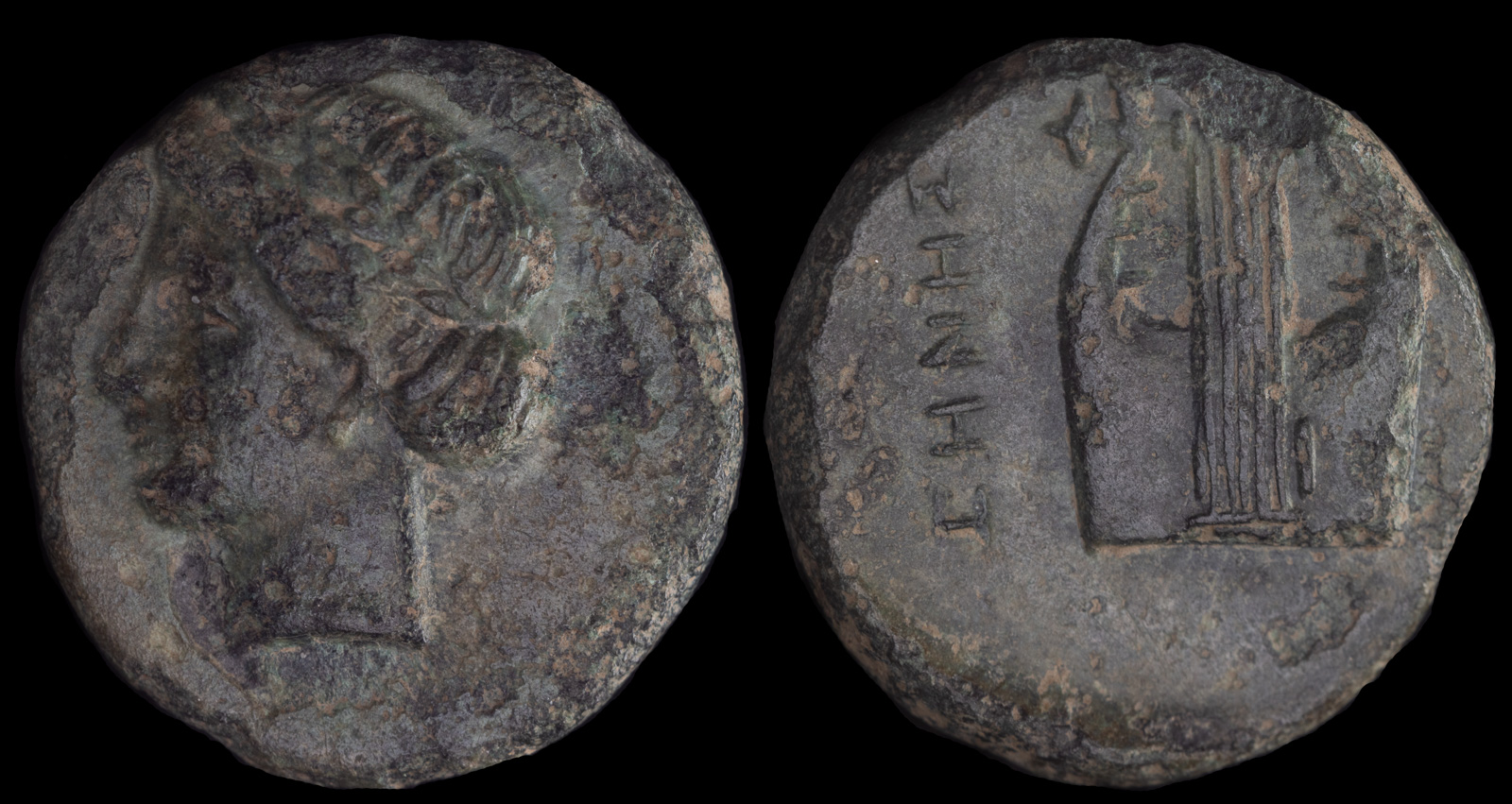
c. 375 – 360 BCE
AR diobol 1.035g, 10.5mm
obverse laureate head of Apollo left;
reverse Kithara with six strings, KOΛOΦΩ upward on left, obscure magistrate’s name downward on right
cf. SNG Cop 141; SNGvA 2006; SNG Kayhan 372; SNG Mun 539; SNG Tub 2900; Milne Colophon 57; BMC Ionia p. 37, 11 (none this magistrate)
ex Numismatik Naumann 2019
Kolophon may have been the most ancient of the twelve Ionian cities. It’s name means ‘summit’ in Greek, and from that you may surmise the city’s location.
Legend has it that the seer Kalchas died at Kolophon shortly after the Trojan War. He had prophesied that he would meet his end when he met a better seer, and when he ran up into Mopsos they had a ‘seer contest’ and Mopsos was the better, so Kalchas died. Kalchas lost on a question concerning a fig tree. He asked Mopsos how many figs were on a small tree, and Mopsos answered that it was enough to fill a medimnos (roughly 51.84 liters) but one fig wouldn’t fit. When they discovered that this was the truth, Mopsos died. Personally, I would have stuffed it in.

circa 330-285 BCE
Æ 15 mm, 1,89 g
Obv: Laureate head of Apollo right.
Rev: KONNIΣ / KO Forepart of horse right.
Kinns 57; Milne, Colophon 114a; SNG Copenhagen 154
Ex Savoca
Strabo mentions there was an ancient saying “he put Kolophon to it” because the city possessed such a notable navy and cavalry that, whenever a battle between two foes went on for a long time, Kololphon would join the dispute and it would be resolved quickly.

ΔΙΟΝΥΣΙΦΑΝΗΣ (Dionysiphanes), magistrate
circa 360-330 BCE
Æ 14 mm, 2,20 g
Laureate head of Apollo r. R/
Forepart of bridled horse r.
Kinns 60; Milne, Colophon 104
Famous people from Kolophon included Mimnermos, who was a flute player and poet, and Xenophanes, who was an important philosopher. There was also Polymnastos, who Pindar stated was one of the best musicians.

ΕΚΑΤΑΙΟΣ (Hekataios), magistrate
circa 330-285 BCE
Æ 14 mm, 2,10 g
Laureate head of Apollo to right.
Rev. EKATAIOΣ KO Forepart of bridled and saddled horse to right.
Kinns 61. Milne 107. SNG Copenhagen 152
Until the 7th century BCE, Kolophon was the major power in the area. However, by the time Alexander the Great arrived, the city had been eclipsed by Ephesos and Miletos.
In the 3rd century BCE, Kolophon was destroyed by Lysimachos.
The obverse of this coin depicts Apollo, who was by myth the father of Mopsos. Around the time this coin was minted, there was an oracle to Apollo Klarios in Kolophon. Ruins of the temple remain today.

Leodamas, magistrate
Circa 360-330 BCE
Ae Chalkous 2.12g 14mm
Obv: Laureate head of Apollo right.
Rev: ΛEΩΔAMAΣ / KOΛ. Forepart of horse right.
Kinns 55; Milne 115; SNG Copenhagen 155

Zenes magistrate
circa 330-294 BCE
Æ 13mm, 1,92g
Obv: Laureate head of Apollo left
Rev: ΖΗΝΗΣ Lyre with five strings
Milne Period V 111